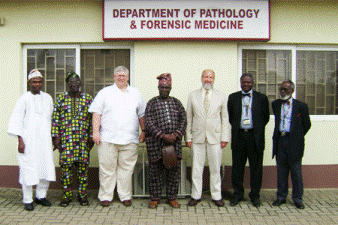Natural Resources, School of

Karl Reinhard Publications
Document Type
Article
Date of this Version
2015
Citation
Published in Advances in Parasitology, Vol. 90, Ch. 9, pp. 349–387.
PMID 26597072
doi:10.1016/bs.apar.2015.03.003
Abstract
Parasite finds in ancient material launched a new field of science: paleoparasitology. Ever since the pioneering studies, parasites were identified in archaeological and paleontological remains, some preserved for millions of years by fossilization. However, the paleoparasitological record consists mainly of parasites found specifically in human archaeological material, preserved in ancient occupation sites, from prehistory until closer to 2015. The results include some helminth intestinal parasites still commonly found in 2015, such as Ascaris lumbricoides, Trichuris trichiura and hookworms, besides others such as Amoebidae and Giardia intestinalis, as well as viruses, bacteria, fungi and arthropods. These parasites as a whole provide important data on health, diet, climate and living conditions among ancient populations. This chapter describes the principal findings and their importance for knowledge on the origin and dispersal of infectious diseases.
Included in
Archaeological Anthropology Commons, Ecology and Evolutionary Biology Commons, Environmental Public Health Commons, Other Public Health Commons, Parasitology Commons


Comments
Copyright © 2015 Elsevier Ltd. Used by permission.